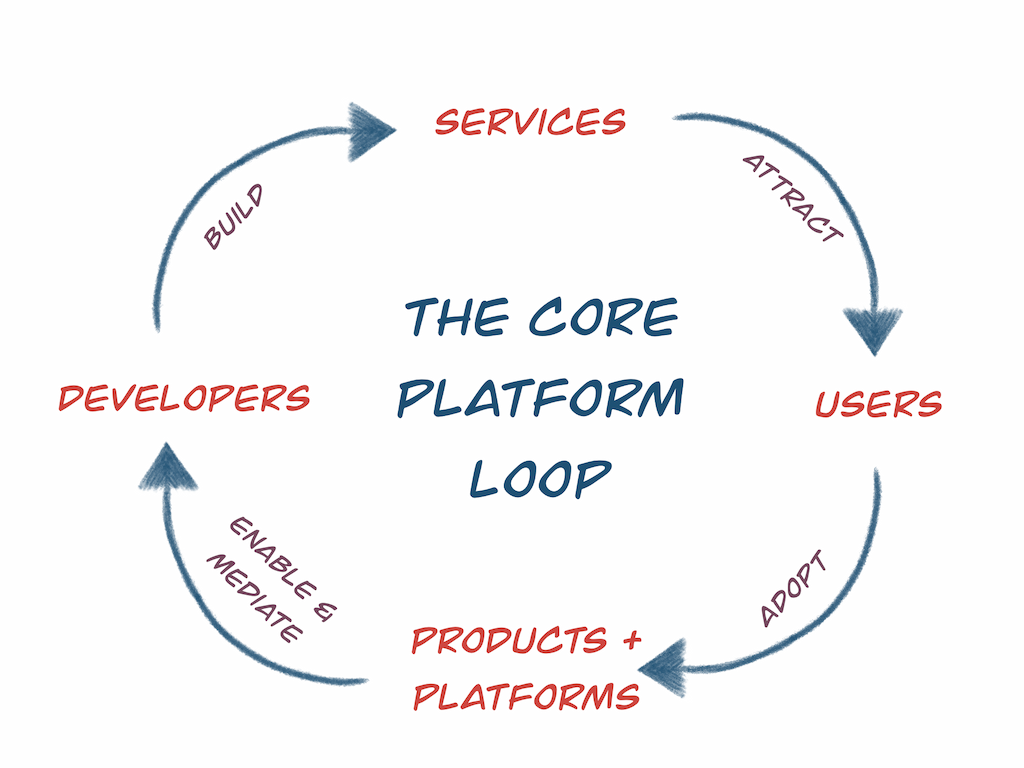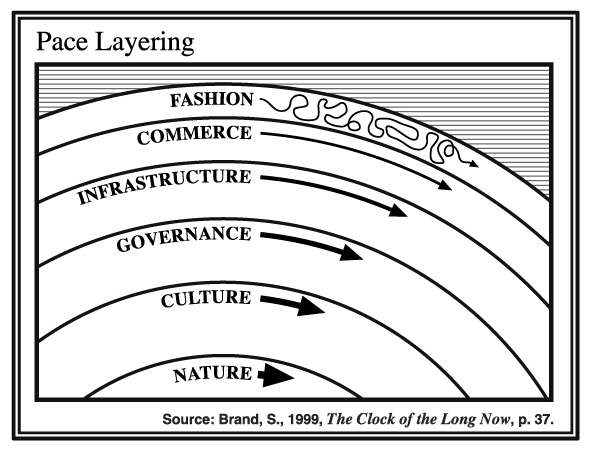The Core Web Platform Loop
Joining a new team has surfaced just how much I've relied on a few lenses to explain the incredible opportunities and challenges of platform work. This post is the second in an emergent series towards a broader model for organisational and manager maturity in platform work, the first being last year's Platform Adjacency Theory. That article sets out a temporal model that focuses on trust in platforms. That trust has a few dimensions:
- Trust in reach. Does the platform deliver access to the users an app or service caters to? Will reach continue to expand at the rate computing does?
- Trust in capabilities. Can the platform enable the core use-cases of most apps in a category?
- Trust in governance. Often phrased as fear of lock-in, the goal of governance is to marry stability in the tax rate of a platform with API stability and reach.[1]
These traits are primarily developer-facing for a simple reason: while the products that bring platforms to market have features and benefits, the real draw comes from safely facilitating trade on a scale the platform vendor can't possibly bootstrap on their own.
Search engines, for example, can't afford to fund producing even a tiny sliver of the content they index. As platforms, they have to facilitate interactions between consumers and producers outside their walls — and continue to do so on reasonably non-extractive terms.
Thinking about OSes and browsers gives us the same essential flavour: to make a larger market for the underlying product (some OS, browsers in general), the platform facilitates a vast range of apps and services by maximising developer reach from a single codebase at a low incremental cost. Those services and apps convince users to obtain the underlying products. This is the core loop at the heart of software platforms:

Cycles around the loop take time, and the momentum added or lost in one turn of the loop creates or destroys opportunity for the whole ecosystem at each successive step. Ecosystems are complex systems and grow and shrink through multi-party interplay.
Making progress through intertemporal effects is maddening to product-focused managers who are used to direct build ⇒ launch ⇒ iterate cycles. They treat ecosystems as static and immutable because, on the timescales they operate, that is apparently true. The lens of Pace Layering reveals the disconnect:

Products that include platforms iterate their product features on the commerce or fashion timescale, while platform work is the slower, higher-leverage movement of infrastructure and governance. Features added in a release for end-users have impact in the short run, while features added for developers may add cumulative momentum to the flywheel many releases later as developers pick up the new features and build new types of apps that, in turn, attract new users.
This creates a predictable bias in managers towards product-only work. Iterating on features around an ecosystem becomes favoured, even when changing the game (rather than learning to play it incrementally better) would best serve their interests. In extreme versions, product-only work leads to strip-mining ecosystems for short-term product advantage, undermining long-term prospects. Late-stage capitalism loves this sort of play.
The second common bias is viewing ecosystems that can't be fully mediated as somebody else's problem or as immovable. Collective action problems in open ecosystem management are abundant. Managers without much experience or comfort in complex spaces tend to lean on learned helplessness about platform evolution. "Standards are slow" and "we need to meet developers where they are" are the reasonable-sounding refrains of folks who misunderstand their jobs as platform maintainers to be about opportunities one can unlock in a single annual OKR cycle. The upside for organisations willing to be patient and intentional is that nearly all your competitors will mess this up.
Failure to manage platform work at the appropriate time-scale is so ingrained that savvy platform managers can telegraph their strategies, safe in the knowledge they'll look like mad people.
One might as well be playing cricket in an American park; the actions will look familiar to passers-by, but the long game will remain opaque. They won't be looking hard enough, long enough to discern how to play — let alone win.
Successful platforms can extract unreasonably high taxes in many ways, but they all feature the same mechanism: using a developer's investments in one moment to extract higher rents later. A few examples:
- IP licensing fees that escalate, either over time or with scale.
- Platform controls put in place for safety or other benefits re-purposed for rent extraction (e.g. payment system taxes, pay-for-ranking in directories, etc.).
- Use of leverage to prevent suppliers from facilitating platform competitors in equal terms.
Platforms are also in competition over these taxes. One of the web's best properties is that, through a complex arrangement of open IP licensing and broad distribution, it exerts significantly lower taxes on developers in a structural way (ceteris peribus). ↩︎